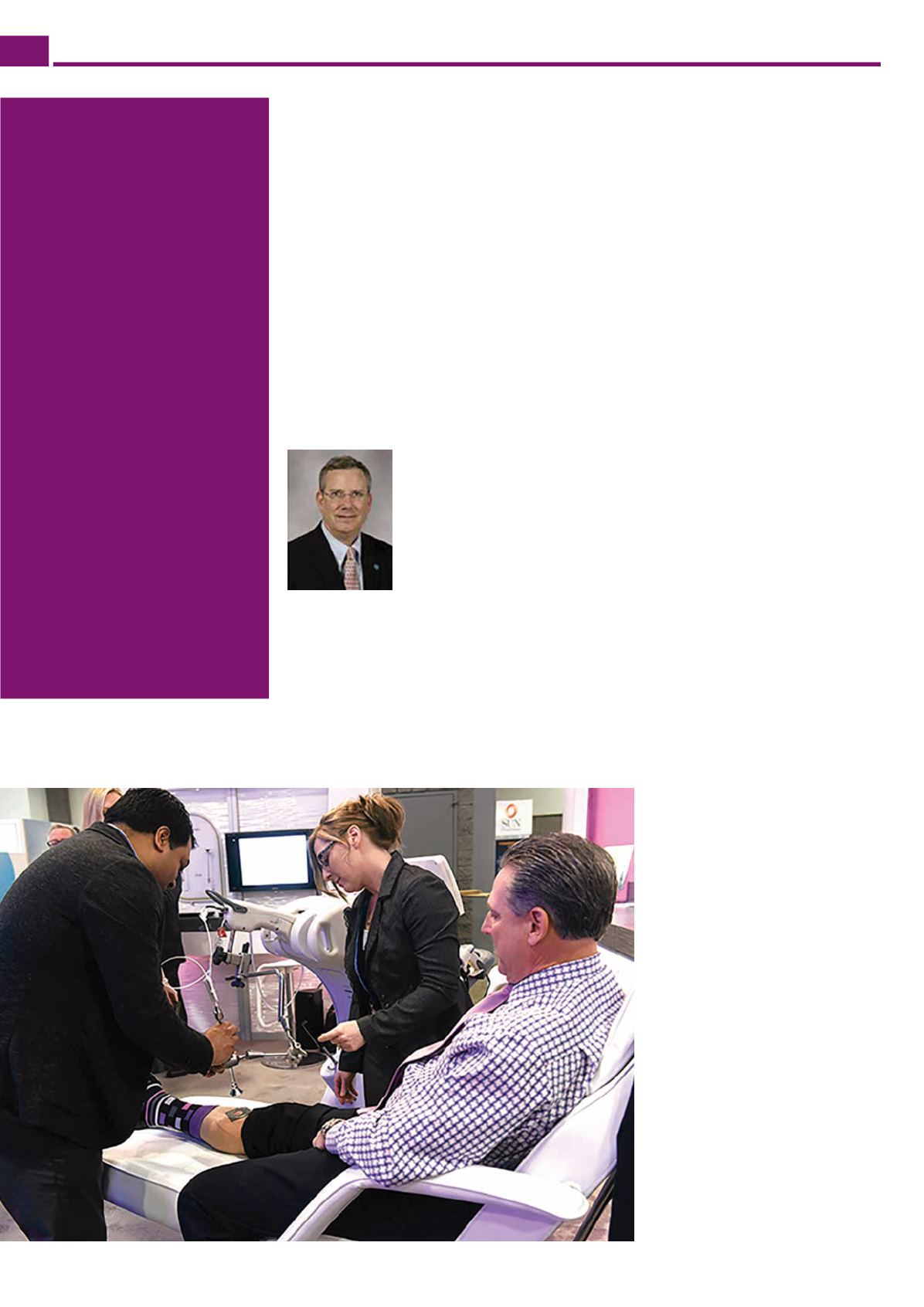
AAD 2016
4–8 MARCH 2016 •
WASHINGTON, USA
PracticeUpdate
Dermatology
’s Editor-
in-Chief and Editorial/
Advisory Board members
weigh in on controversies
in managing
cutaneous lupus and
dermatomyositis
patients, as well
as treating and
preventing herpes
zoster; discussions
on Zika-linked skin
eruptions; and insights
on emerging technology
in dermatology, from
AAD 2016.
Dr Robert Brodell discusses
wounds and ulcers,
controversies inmanaging
cutaneous lupus and
dermatomyositis patients
Robert Brodell MD, FAAD, is Professor and Chair of the Department of
Dermatology at the University of Mississippi Medical Center in Jackson, and
Editor-in-Chief of
PracticeUpdate Dermatology
.
SYM S056 – Wounds and ulcers: the good, the bad and the ugly.
Robert S. Kirsner
Eliot Mostow noted that the exact cost of wound care and the number of ulcers
treated annually in the US needs further clarification. While 6.5 million chronic
wounds at a cost of US$25 billion dollars per year have been a statistic cited
multiple times, Dr Mostow proposes more focus on extrapolation from defined
“closed healthcare” systems to flesh out these numbers more accurately and
adjust for population changes. Multiple studies suggest that the costs may be
higher even with (potentially) lower numbers of wounds. It is possible that the
number exceeds that of non-melanoma skin cancers treated in a year. This is not
a condition that dermatologists should cede to physicians from other specialties.
Hadar Lev-Tov’s lecture stressed the importance of choosing the correct test to
assess arterial insufficiency in patients with diabetic leg ulcerations. Transcuta-
neous oxygenation measure and toe pressures can be a more accurate reflection
of oxygenation and flow when compared withABI (ankle-brachial pressure index)
because of collateral blood flow in the legs.
Adam Friedman noted that he no longer uses silver sulfadiazine because the agent
can impede wound healing. Silver dressings, however, are effective antimicrobials
and improve healing rates when used
appropriately. They are unlikely to cause
argyria because of the small amount of
silver actually used in the products.
Manuka honey is helpful for wounds
because of osmotic effects and by
keeping the wound moist. However,
honey that has not been irradiated
(medical grade) may create risk for
bacterial infections.
Nitric oxide accelerates wound healing,
but not all nitric oxide donors and
generators perform equally. There are
no products currently on the market
harnessing this technology, but a
number of promising studies suggest
that new products will be available
within a few years.
FOC U067 – Controversies inmanagement
and treatment of cutaneous lupus and
dermatomyositis patients.
Benjamin F.
Chong
When dermatomyositis (DM) is suspect-
ed based on dermatologic signs, several
© 2016 AMERICAN ACADEMY OF DERMATOLOGY
PRACTICEUPDATE RHEUMATOLOGY & DERMATOLOGY
AMERICAN ACADEMY OF DERMATOLOGY 73RD ANNUAL MEETING
6








